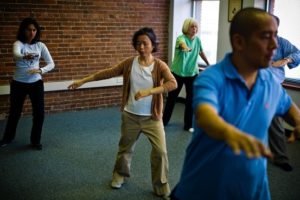Be More Mindful and Weigh Less
By John M. de Castro, Ph.D.
“People who practice mindfulness regularly learn to regulate their attention by focusing nonjudgmentally on thoughts, emotions, and physical sensations. This are central features of mindfulness as a strategy to change eating behaviours.” – Now Unlimited
Obesity has become an epidemic in the industrialized world. In the U.S. the incidence of obesity, defined as a Body Mass Index (BMI) of 30 or above has more than doubled over the last 35 years to currently around 35% of the population, while two thirds of the population are considered overweight or obese (BMI > 25). Although the incidence rates have appeared to stabilize, the fact that over a third of the population is considered obese is very troubling. This is because of the health consequences of obesity. Obesity has been found to shorten life expectancy by eight years and extreme obesity by 14 years. This occurs because obesity is associated with cardiovascular problems such as coronary heart disease and hypertension, stroke, metabolic syndrome, diabetes, cancer, arthritis, and others.
Obviously, there is a need for effective treatments to prevent or treat obesity. But, despite copious research and a myriad of dietary and exercise programs, there still is no safe and effective treatment. Mindfulness is known to be associated with lower risk for obesity, alter eating behavior and improve health in obesity. This suggests that mindfulness training may be an effective treatment for overeating and obesity alone or in combination with other therapies.
In today’s Research News article “Associations of Dispositional Mindfulness with Obesity and Central Adiposity: the New England Family Study.” See summary below or view the full text of the study at: https://www.ncbi.nlm.nih.gov/pmc/articles/PMC4965799/
Loucks and colleagues recruited a sample of 400 from the New England Family Study (NEFS), which includes 17,921 participants born between 1959 and 1974 with extensive longitudinal data. Childhood weight and height was recorded and mindfulness measured. Based upon the participants’ mindfulness scores they were separated into three groups; low, medium, and high mindfulness. They were further measured for adult height, weight, body mass index (BMI), hip and waist circumference, and body fat. They further adjusted the data to control for age, gender, race/ethnicity, birth weight, childhood socioeconomic status, and childhood intelligence.
They found that the low mindfulness group had significantly greater incidence of adult obesity (BMI > 30) and greater overall and hip fat mass than the high mindfulness participants. They also found that participants who were not obese in childhood but became obese in adulthood had significantly lower mindfulness scores. Additionally, those who were obese in childhood but not adulthood had significantly higher mindfulness scores. Hence, they found significant associations between mindfulness and the development of high body fat levels and obesity.
It should be kept in mind that these results are correlational and causation cannot be ascertained. But, these findings fit with the idea that mindfulness tends to counteract the development of obesity. This may occur by increasing the individuals’ attention to what and how they are eating, sometimes called mindful eating. Indeed, mindfulness training reduces eating behaviors that are associated with obesity, including reward driven and eating for pleasure.
So, it is possible that if you be more mindful you will weigh less.
“mindfulness training programs can improve obesity-related eating behaviors in adults. Research has also shown that mindfulness training can be successfully implemented in child and adolescent populations with promise for improving stress-related and neurocognitive outcomes.” – Gillian O’Reilly
CMCS – Center for Mindfulness and Contemplative Studies
This and other Contemplative Studies posts are also available on Google+ https://plus.google.com/106784388191201299496/posts and on Twitter @MindfulResearch
Study Summary
Loucks, E. B., Britton, W. B., Howe, C. J., Gutman, R., Gilman, S. E., Brewer, J., … Buka, S. L. (2016). Associations of Dispositional Mindfulness with Obesity and Central Adiposity: the New England Family Study. International Journal of Behavioral Medicine, 23(2), 224–233. http://doi.org/10.1007/s12529-015-9513-z
Abstract
Purpose
To evaluate whether dispositional mindfulness (defined as the ability to attend nonjudgmentally to one’s own physical and mental processes) is associated with obesity and central adiposity.
Methods
Study participants (n=394) were from the New England Family Study, a prospective birth cohort, with median age 47 years. Dispositional mindfulness was assessed using the Mindful Attention Awareness Scale (MAAS). Central adiposity was assessed using dual-energy X-ray absorptiometry (DXA) scans with primary outcomes android fat mass and android/gynoid ratio. Obesity was defined as body mass index ≥30 kg/m2.
Results
Multivariable-adjusted regression analyses demonstrated that participants with low vs. high MAAS scores were more likely to be obese (prevalence ratio for obesity= 1.34 (95 % confidence limit (CL): 1.02, 1.77)), adjusted for age, gender, race/ethnicity, birth weight, childhood socioeconomic status, and childhood intelligence. Furthermore, participants with low vs. high MAAS level had a 448 (95 % CL 39, 857) g higher android fat mass and a 0.056 (95 % CL 0.003, 0.110) greater android/gynoid fat mass ratio. Prospective analyses demonstrated that participants who were not obese in childhood and became obese in adulthood (n=154) had −0.21 (95 % CL −0.41, −0.01; p=0.04) lower MAAS scores than participants who were not obese in childhood or adulthood (n=203).
Conclusions
Dispositional mindfulness may be inversely associated with obesity and adiposity. Replication studies are needed to adequately establish whether low dispositional mindfulness is a risk factor for obesity and adiposity.









